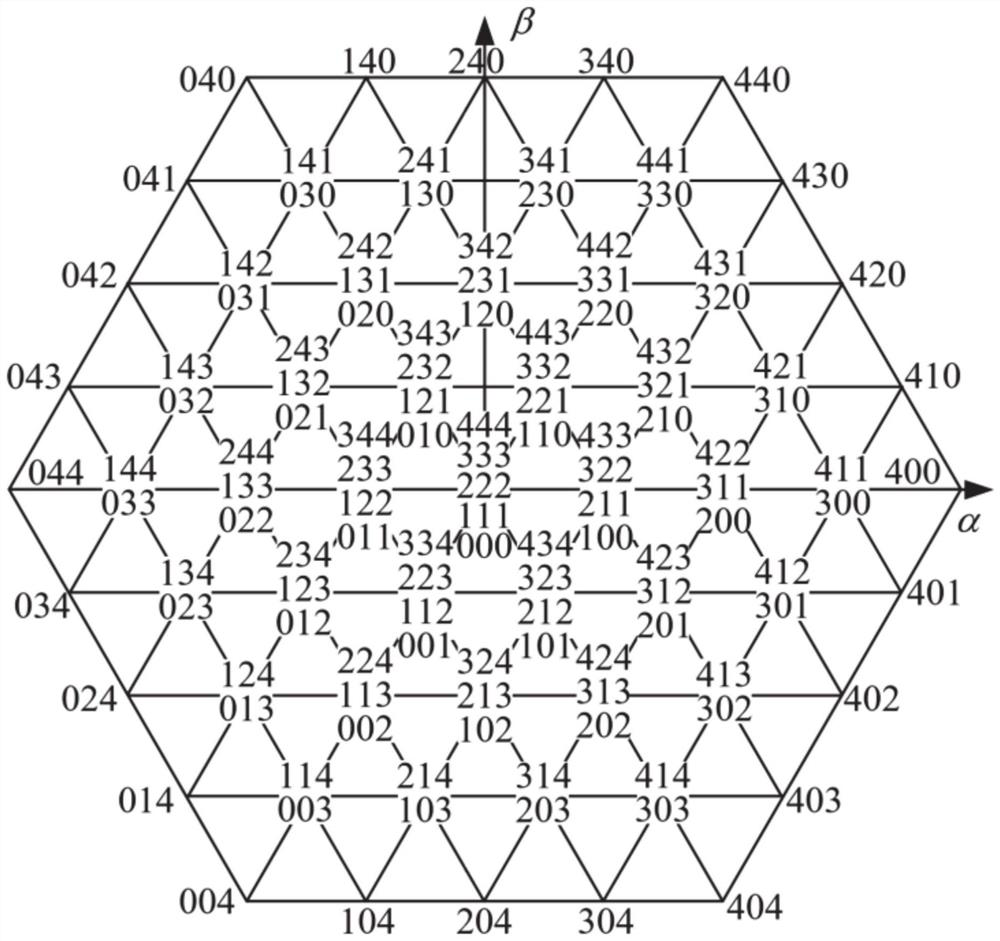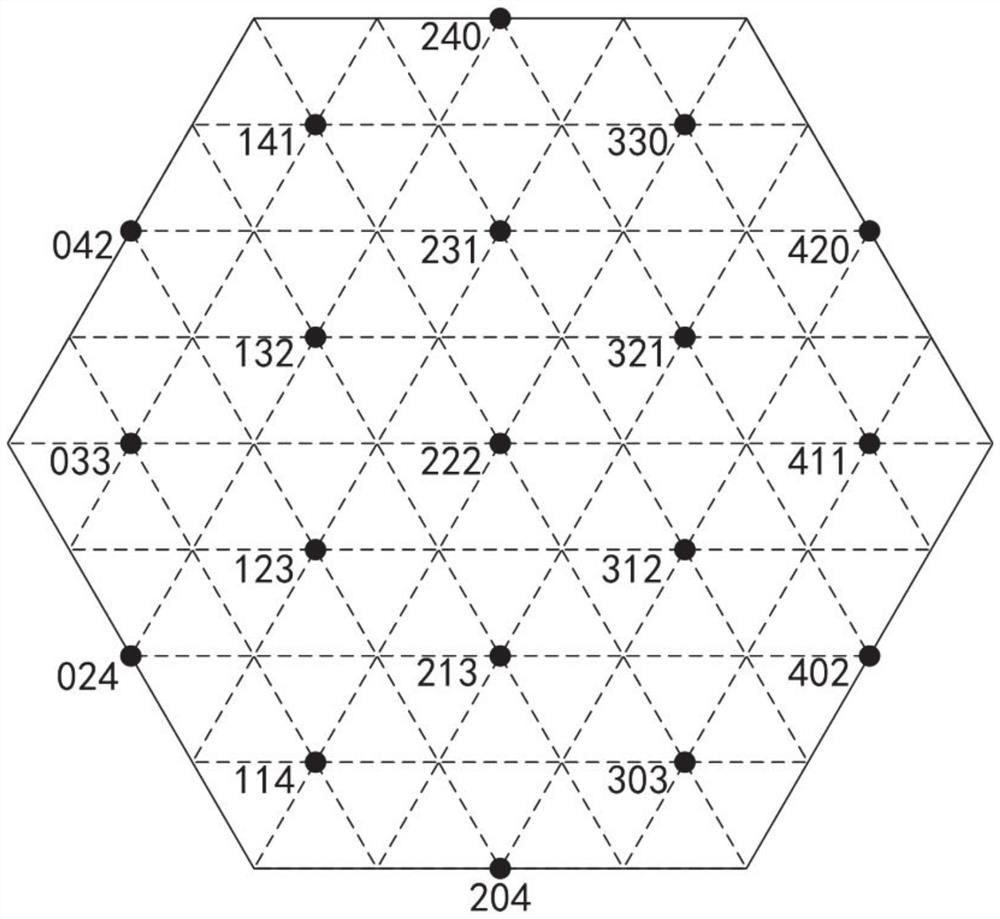T-type five-level NNPC converter and modulation method applicable to converter
A converter, five-level technology, applied in the direction of converting AC power input to DC power output, electrical components, single-network parallel feeding arrangement, etc., can solve the problems of increasing algorithm complexity and uncertainty, and achieve universal Strong performance and applicability, simplified algorithm, and the effect of reverse withstand voltage equalization
- Summary
- Abstract
- Description
- Claims
- Application Information
AI Technical Summary
Problems solved by technology
Method used
Image
Examples
Embodiment 1
[0047] This embodiment discloses a T-type five-level NNPC converter, which includes three-phase bridge arms connected in parallel, each phase bridge arm includes four IGBT tubes connected in series, and two IGBT tubes in different directions are connected in series on one side of the midpoint of the phase bridge arm. After these two tubes, connect two flying capacitors to the upper and lower connections of the four IGBT tubes in series. The voltage of the flying capacitor should be maintained at Vdc / 4, and the other side of the midpoint of the bridge arm is connected to the resistor through a filter; in parallel The input terminals of each bridge arm are connected to a voltage source; each IGBT tube is driven by a control circuit, and the filter is a single-L filter circuit. The converter has fewer switching devices, and can realize five-level output by using only six switching tubes for each phase, and has low cost, high reliability, and small volume and weight.
[0048] The ...
Embodiment 2
[0054] The purpose of this embodiment is to provide a modulation method for a T-type five-level NNPC converter, including:
[0055] Firstly, the mathematical model of the T-type NNPC five-level converter is established, and the mathematical model of the T-type NNPC five-level grid-connected inverter is obtained through the Clarke transformation with constant voltage amplitude, and the system is discretized by the backward Euler method Thus, the state value at time k is obtained. Since the sampling frequency is much greater than the operating frequency, the value at the next k+1 time is usually obtained by Lagrangian interpolation and extrapolation, and the demand vector and five-level vector diagram at the next time are thus obtained. The minimum error vector is selected by comparing the zero-synthesized vectors in , and the calculated vectors are converted into all switch states. Among them, the voltage vector corresponds to one or more switch states, and its impact on the fly...
PUM
 Login to View More
Login to View More Abstract
Description
Claims
Application Information
 Login to View More
Login to View More - Generate Ideas
- Intellectual Property
- Life Sciences
- Materials
- Tech Scout
- Unparalleled Data Quality
- Higher Quality Content
- 60% Fewer Hallucinations
Browse by: Latest US Patents, China's latest patents, Technical Efficacy Thesaurus, Application Domain, Technology Topic, Popular Technical Reports.
© 2025 PatSnap. All rights reserved.Legal|Privacy policy|Modern Slavery Act Transparency Statement|Sitemap|About US| Contact US: help@patsnap.com



